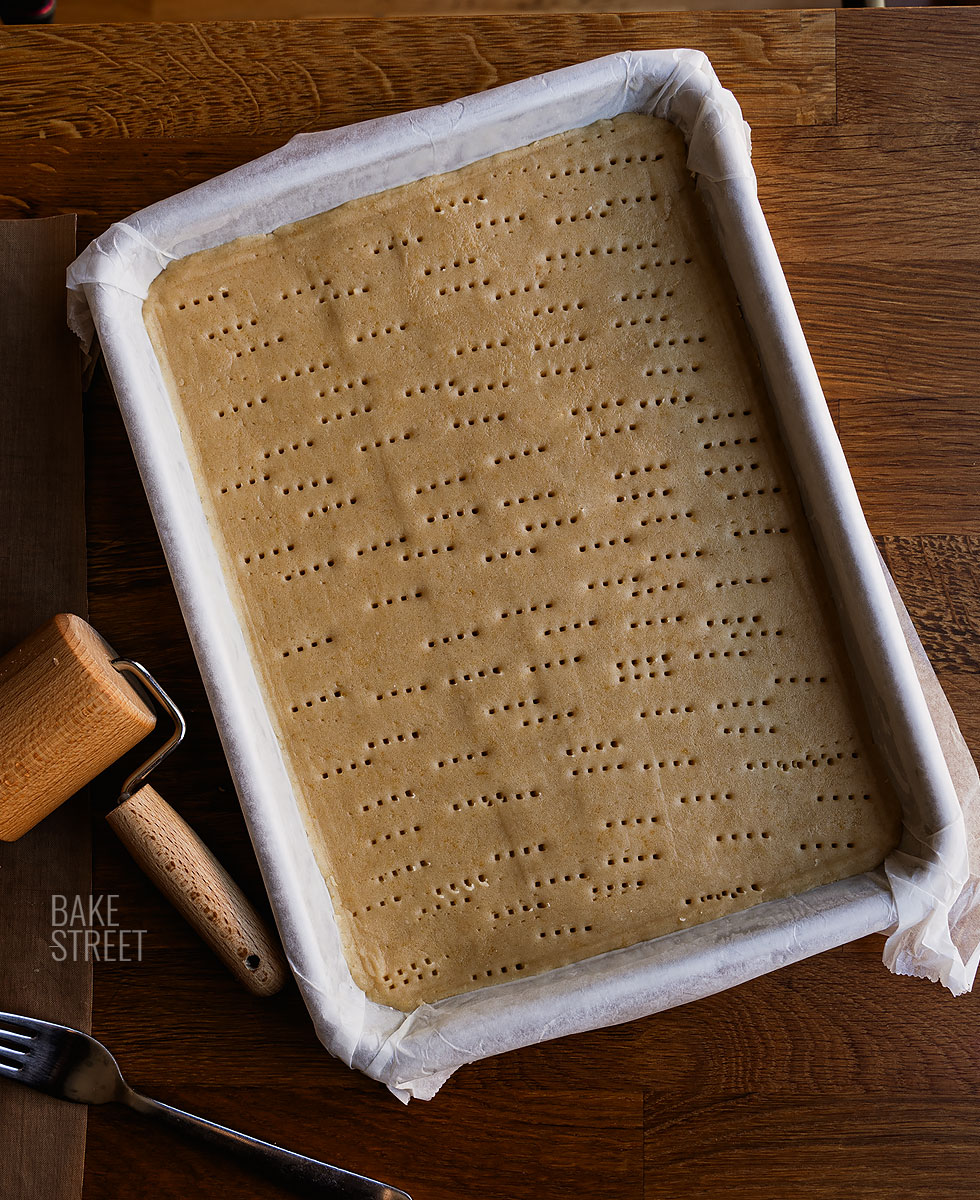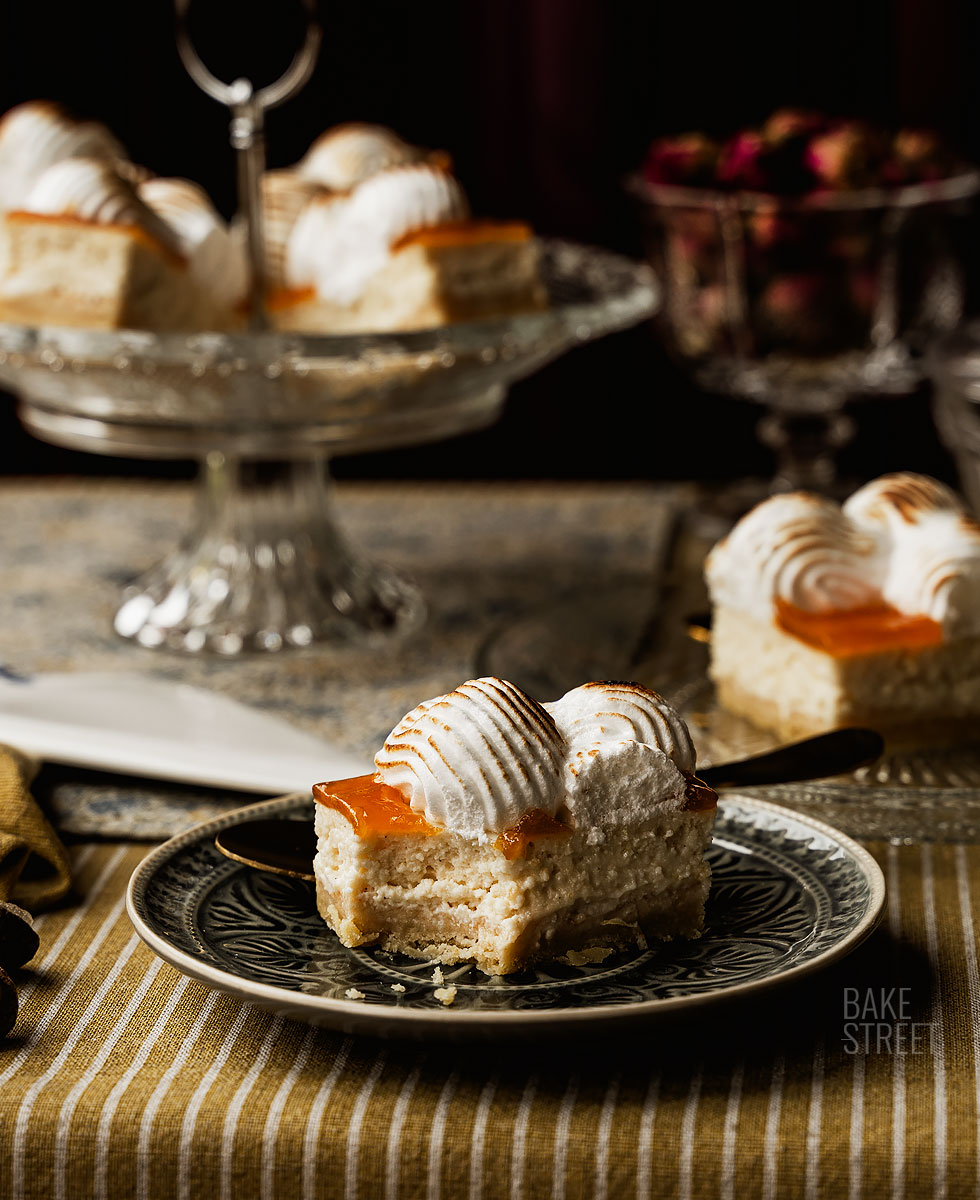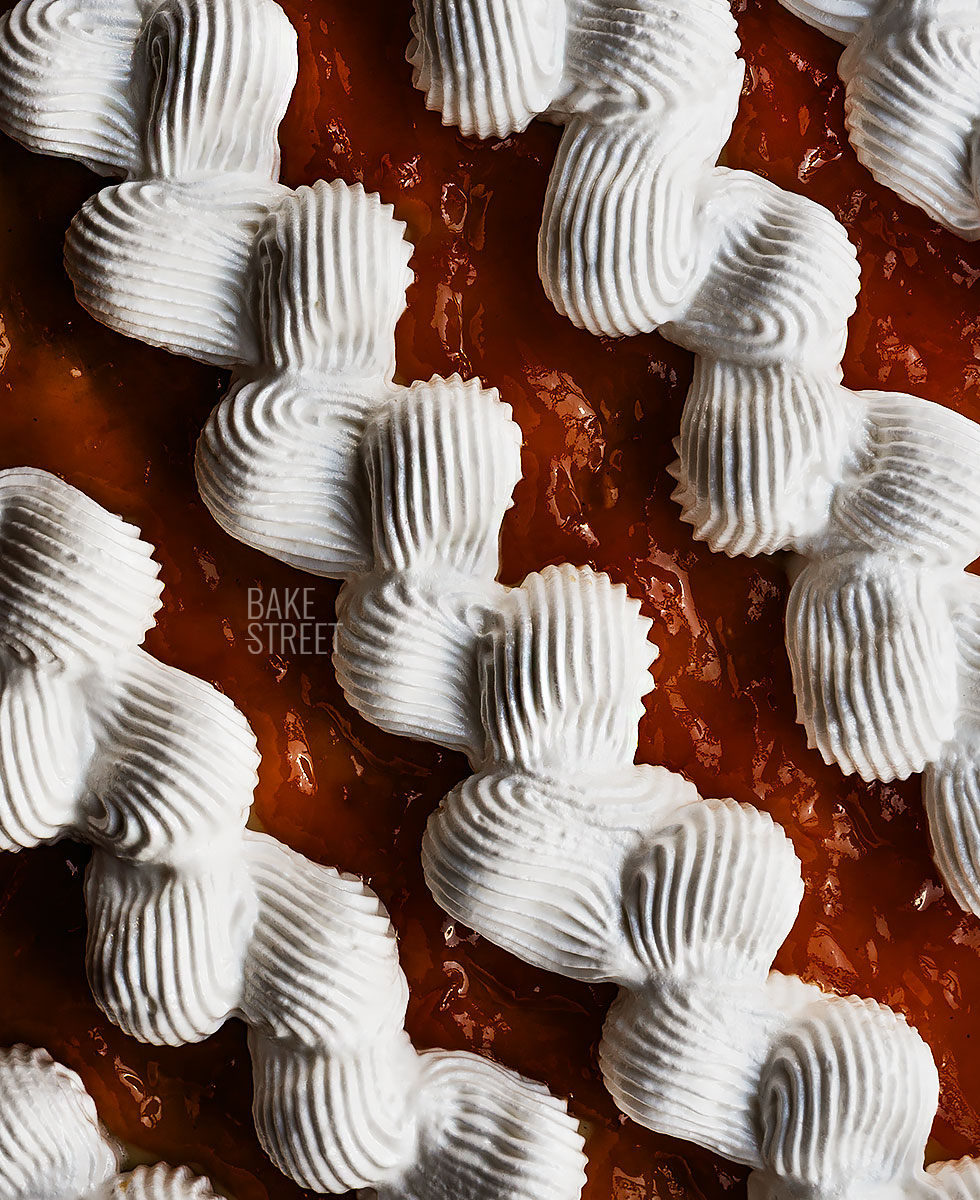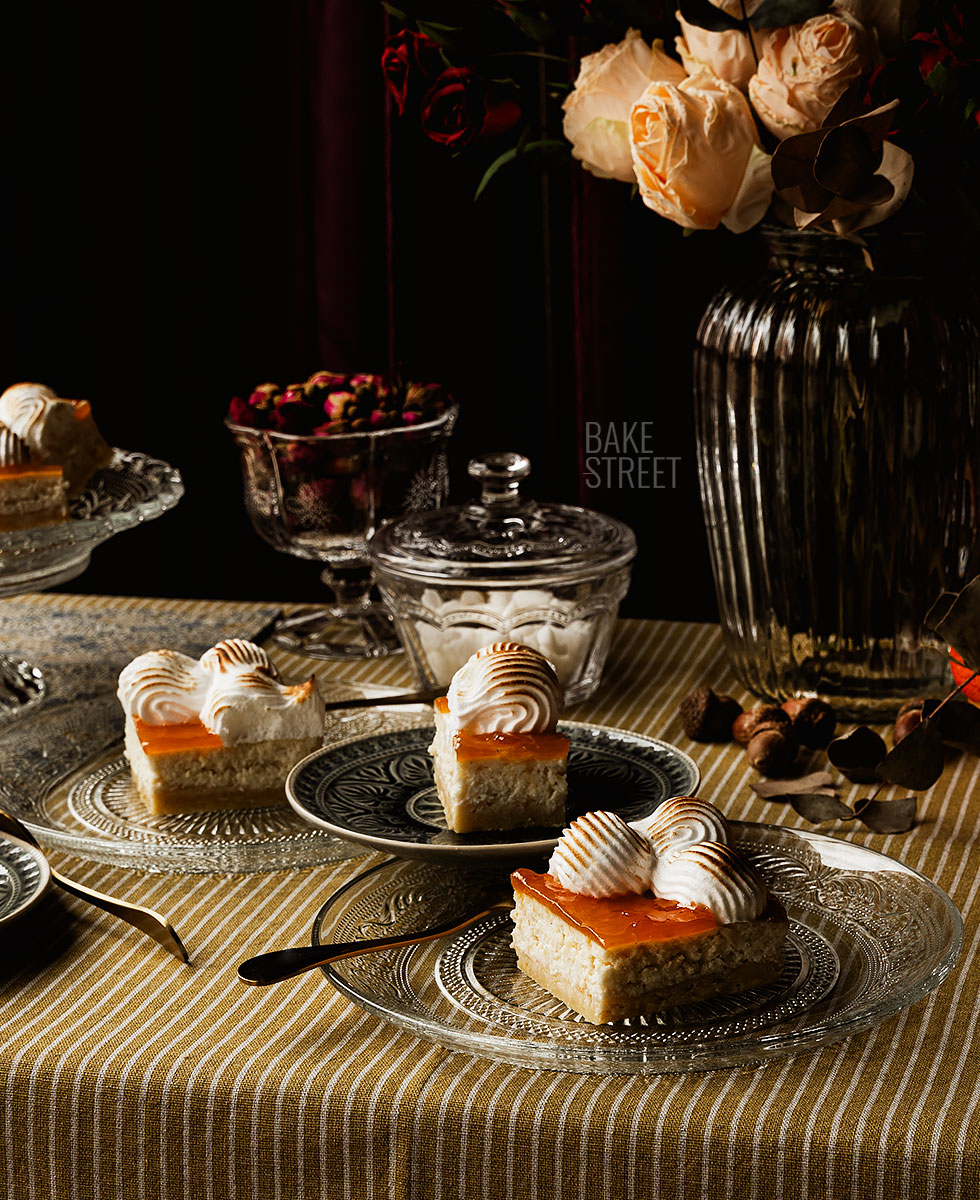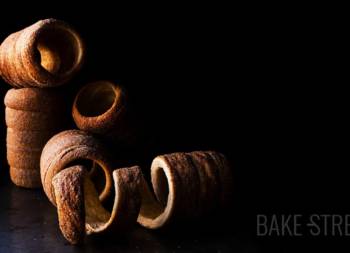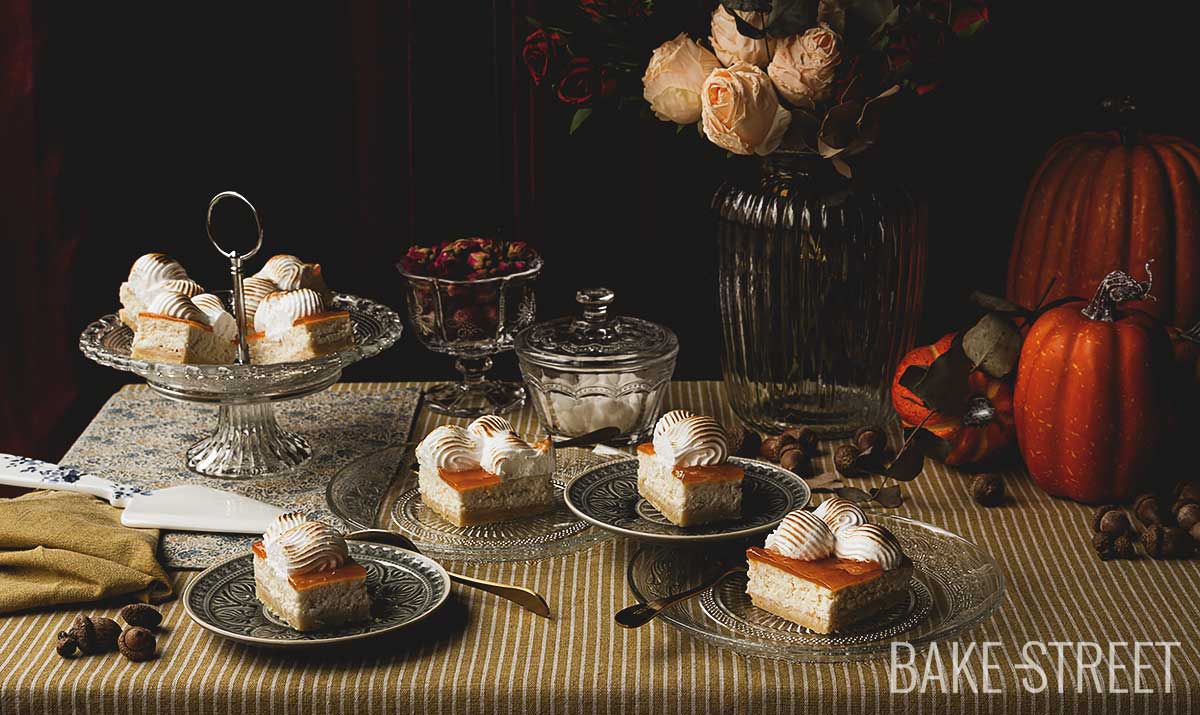
Hungarian Cottage Cheese Cake – Rákóczi Túrós
I love to travel through the gastronomy of each place, surely you have already noticed this… Nothing makes me happier than to take you by the hand and take you to discover gastronomic and cultural gems, accompanied by their history and traditions. Today’s recipe comes to us from Hungary, a corner of the world that treasures true wonders in its pastry, like the recipe I leave you with today. Hungarian Cottage Cheese Cake – Rákóczi Túrós.
I know it looks a bit old-fashioned, vintage, for me this has never been and never will be an impediment, but for those of you who might be put off by it, please don’t let it. This recipe, even though it may not look like it, is incredibly easy to make and the result is formidable. As if that were not enough, it is also ideal to leave it made in advance. Something that takes it to the first places in desserts to have in mind when we visit or when we go to family or friends’ house.
I like Hungarian gastronomy very much, in fact I have already left you several of their preparations because I find them absolutely fascinating. Nobody can deny that the Dobos Cake is fabulous, or the impressive Eszterházy Torta, Zserbo Torta without forgetting the famous Trdloor the delicious Goulash with Knedliky, among others. Today’s recipe comes to expand the Hungarian recipe book and, I hope and wish, you like it as much as we liked it at home.
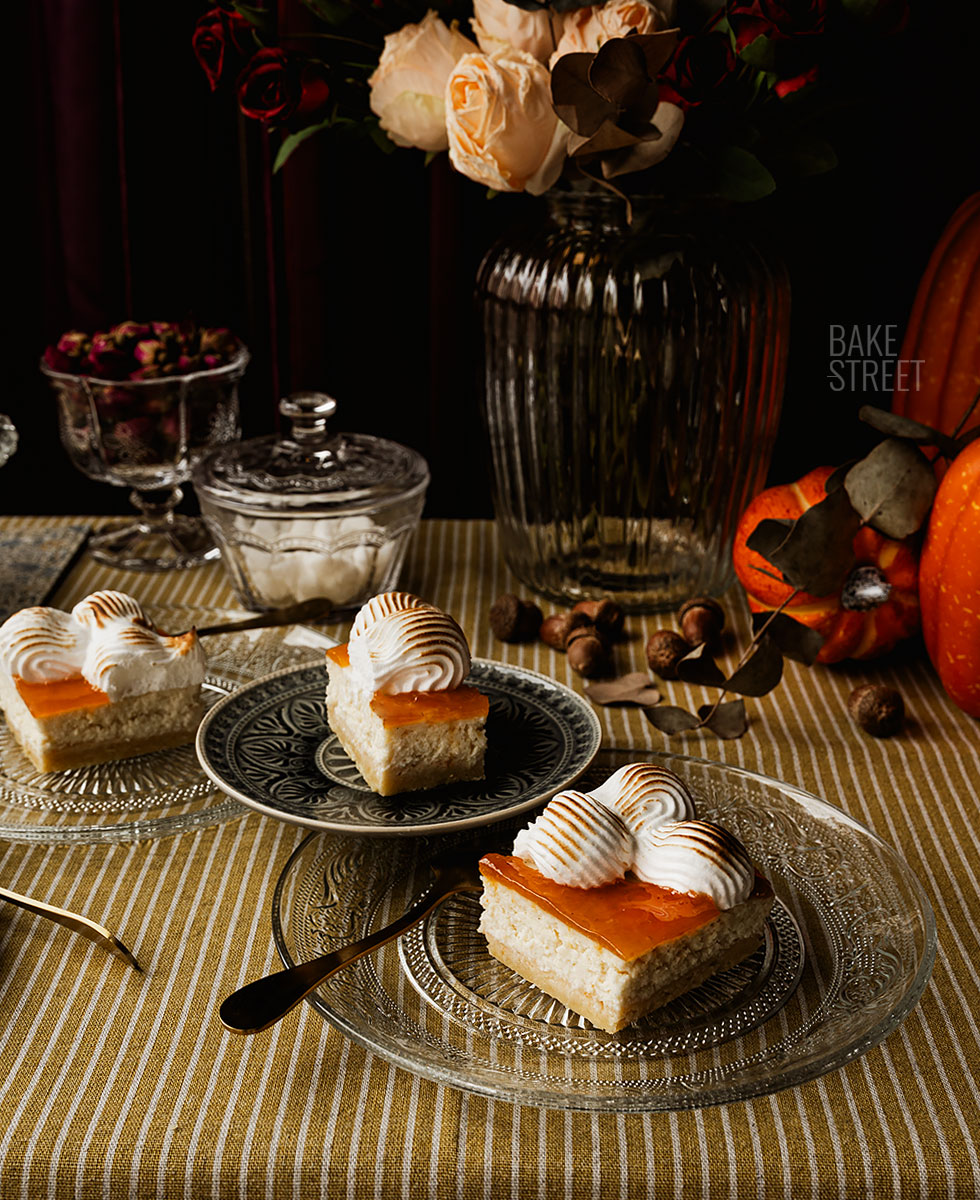
Rákóczi Túrós – Hungarian Cottage Cheese Cake origin.
When we hear the classic word “hungaricum“, a concept that encompasses everything traditional and classic Hungarian, all those relics that belong to this country come to mind, such as this cottage cheese cake. Mistakenly, it is believed that it was created by Prince Ferenc Rákóczi II several centuries ago due to the coincidence between the name of the cake and the surname of the national hero. However, this is a mistake. The dessert originated in the 20th century, and its namesake was another Rákóczi.
János Rákócz was born in Felsőleperd puszta, Dalmand, in the year 1897. He was a pastry chef, master and head chef of the famous Gundel restaurant in Budapest, one of the most exclusive restaurants in Europe and one that has best consolidated its fame since the 1990s. He was also one of the most important representatives of classical Hungarian cuisine. It achieved success not only on Hungarian territory, but also made Hungarian cuisine famous on the international scene.
In 1912 he was already working in the kitchen of the Mágnás casino and, after serving in the army during the First World War, he returned to his original profession in 1920, working as sous chef with Nándor Kedvessy.
His career took him to Nándor Horváth’s downtown buffet, where he served as head chef.
- In 1924, he paid a visit to Paris and worked in a restaurant called Laure.
- In 1926, he returned to Horváth’s restaurant, but this time as head chef.
- From 1930, he worked at the Palota Hotel in Lillafüred, from 1933 at the Gellert, and from 1953 until his retirement he was responsible for the kitchen of the Duna Hotel.
In addition to running the hotel kitchens, Rákóczi also published a cookbook and even won numerous awards at culinary art demonstrations and exhibitions.
After retiring in the year 1961, János Rákóczi exchanged the wooden spoon for a pen and in 1964 published his cookbook Konychművészt – Kitchen Art which already included the recipe for the famous Rákóczi cottage cheese cake.
In 1924 he undertook a master’s journey where he ended up working in the kitchen of the Laure restaurant in Paris, mentioned a few lines above. During his stay, he learned the culinary tricks and procedures of French cuisine, which he wrote down in a small notebook along with the recipes and taste experiences that were of greatest interest to him. Many of these recipes passed from this small notebook to his cookbook.
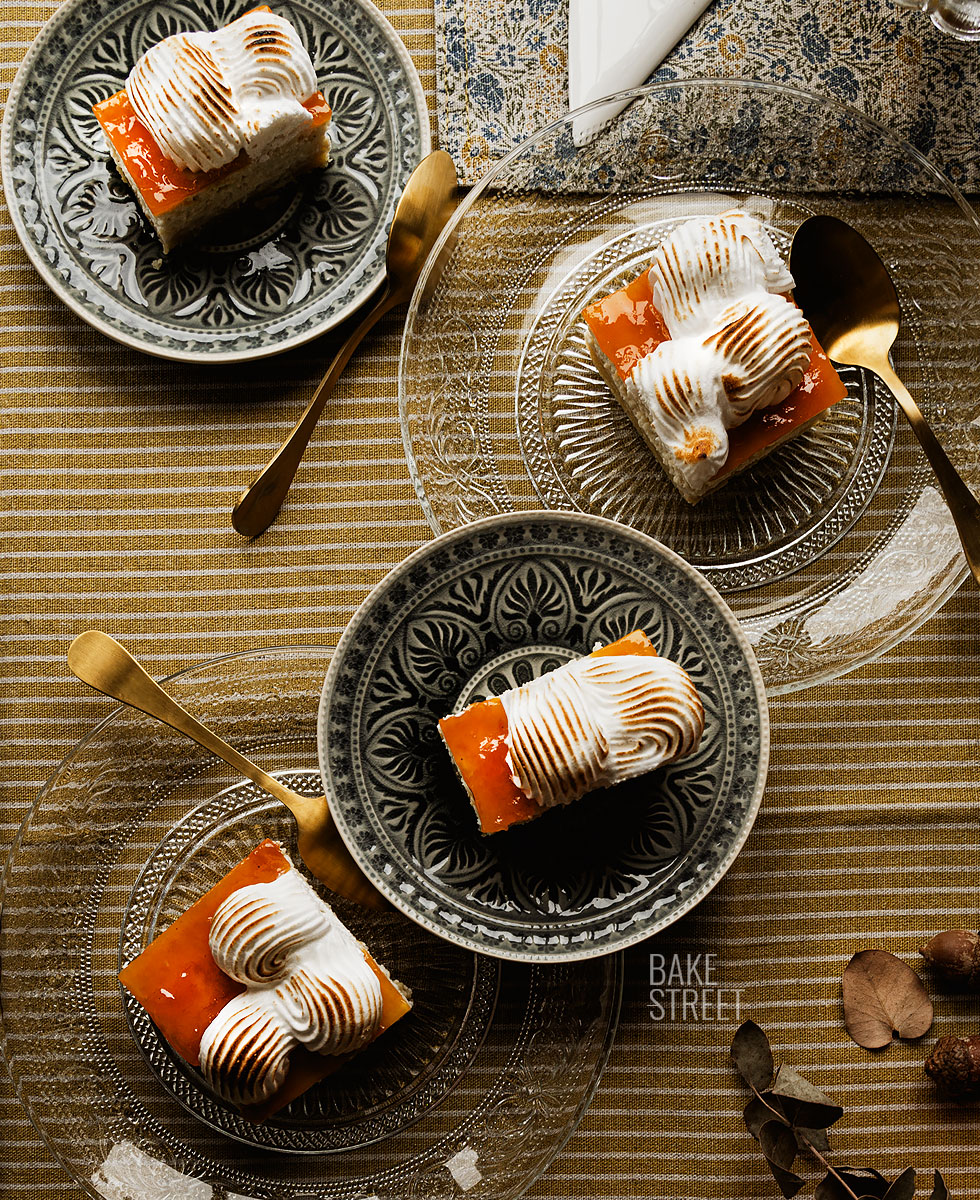
In his book he also revives several forgotten recipes and presents numerous new dishes to the reader. It could be said that his work is an encyclopedia of Hungarian and French food.
One of the most significant moments in his life was when he led the Hungarian cooking team at the 1958 World Exposition in Brussels. Event to which the recipe for the aforementioned Rákóczi cottage cheese cake is also connected.
However, Rákóczi túrós was not a product of the 1960s; the recipe was already known in the 1930s and was published in the specialized magazine for chefs Magyar Szakács in December 1937.
Making the famous Rákóczi Túrós.
This cake consists of a base made with a dough similar to linzer, on which rests a cream flavored with lemon, vanilla and made with cheese. It is usual to find in the filling the addition of raisins soaked in liquor, sometimes replaced by dried apricots, although it is not an indispensable ingredient. Finally, it is covered with a layer of apricot jam and decorated with meringue.
Linzer dough, a dough created by Johann Konrad Vogel in the 19th century and used to prepare the famous Linzer Cake. The dough for this preparation is not exactly the same as that of the famous Linzer cake, it could be said that it is an adaptation of this dough being very similar to a shortcrust pastry.
It is made with a mixture of flour, baking powder, butter, egg yolk and a little sour cream, which gives it an incredibly wonderful texture. Shortcrust pastry made with sour cream is much easier to work with, without forgetting the wonderful texture and flavor it has.
When it comes to the filling, there are many variations. The original recipe called for three egg yolks and two egg whites for half a kilo of túró cheese, but in the many reworked versions you will find different amounts of egg and sour cream, always depending on the variety of cheese used, as well as the addition of breadcrumbs, semolina or cracker crumbs.
Finally, the top is decorated with meringue and apricot jam. Traditionally, once these two elements have been placed on the cake, they must be baked, although nowadays there are many versions that omit this step.
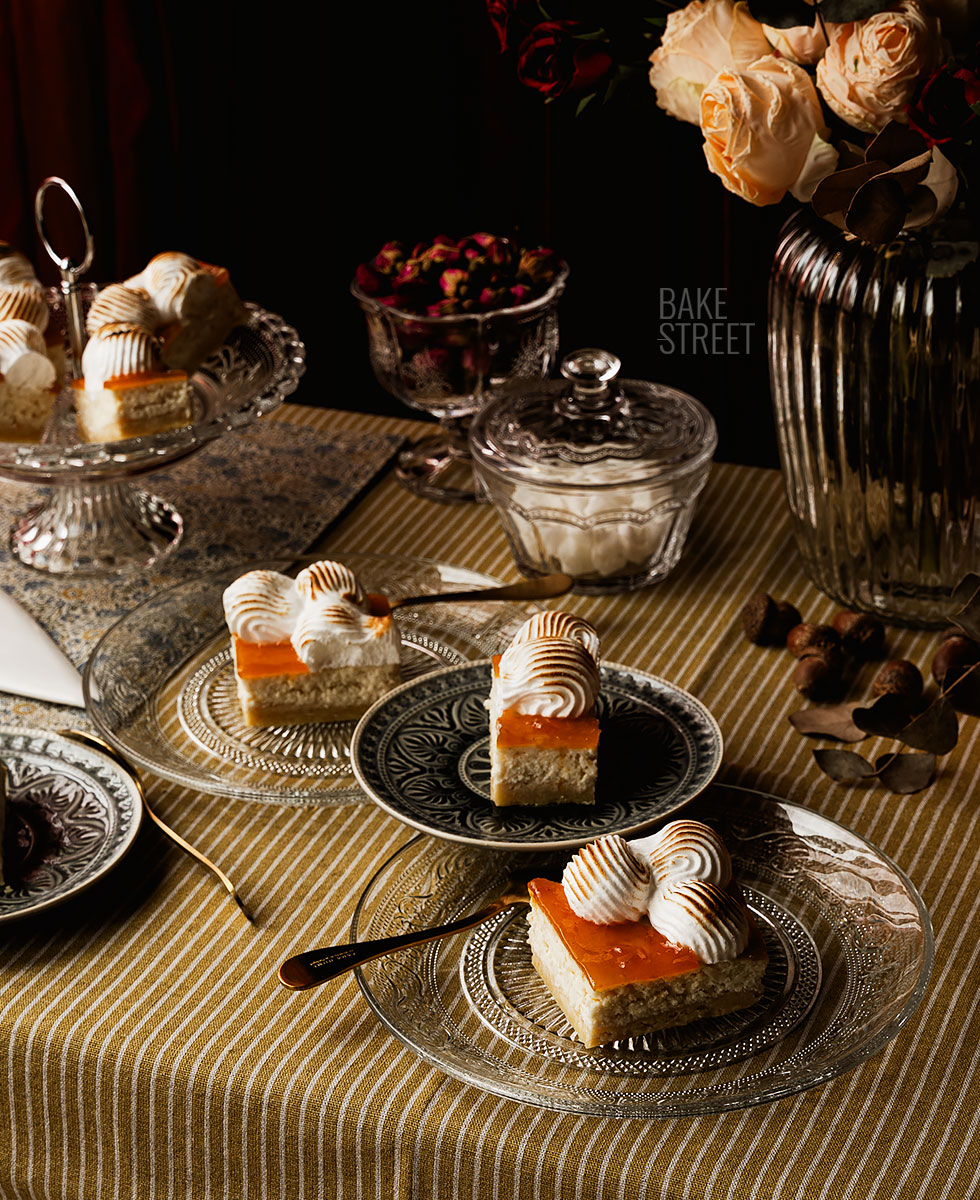
What is túró cheese?
In Hungary, the most common varieties of cheese are young and fresh. In this category, túró is undoubtedly the most popular, accounting for half of all cheese consumed in the country.
Túró is usually translated as cottage cheese. But this Hungarian cheese variety is far from cottage cheese. Túró is a fresh, soft cottage cheese, similar to farmhouse cheese or quark that is usually made from cow’s milk, although sheep’s milk is tastier.
This variety of cheese is the main ingredient in many classic Hungarian dishes. One of the most common is körözött(better known as Liptauer), a spicy cream cheese spread made from túró seasoned with sweet paprika, onion, salt and caraway seeds.
In my case I used cottage cheese made with cow’s, sheep’s and goat’s milk, its consistency was quite dense and its flavor very mild and delicate. It is a pity not to be able to enjoy it with authentic cheese túró, but we will have to adapt to the varieties of cheese that we have where we live. I do advise you, whenever possible, to use a variety of ricotta or ricotta of good quality and high fat content (no 0% or similar)
Recipe Hungarian Cottage Cheese Cake - Rákóczi Túrós
Ingredients for a 25 x 18 x 3 cm mold/tray
SHORTCRUST:
- 250 g cake flour
- 60 g sugar
- 120 g unsalted butter, cold
- 1 egg yolk, large
- 40 g crema cheese or crème fraîche or sour cream
- 6 g baking powder
- pinch of salt
COTTAGE CHEESE FILLING:
- 750 g cottage cheese
- 120 g sugar
- 3 egg yolks, large
- 3 egg whites, large
- one lemon zest
- 2 tsp natural vanilla extract
ITALIAN MERINGUE:
- 3 egg whites, large
- 225 g sugar
- 51 g water
DECORATION:
- 200 g apricot jam without chunks, approx.
MATERIAL WE WILL NEED AND VISIBLE IN THE VIDEO:
- KitchenAid* or stand mixer
- KitchenAid crystal bowl*
- rectangular tray Naturals Nordic Ware*
- rolling pin + small rolling pin
- 2 teflon sheets
- pastry bag + BS 118 tip
- pastry spatula
- serving spoon*
- salero Emile Henry*
- saucepan
- cooling rack
- digital kitchen scale
- digital kitchen thermometer
- blowtorch*
*These products you have a 5% discount on the website Claudia&Julia using this code BAKESTREET. Delivers throughout Europe.
Instructions
Prepare shortcrust.
- In the bowl of the KitchenAid or stand mixer, add all the ingredients.
- Mix with flat beater attachment until a sandy texture is achieved.
- Pour onto a clean work surface and knead until more or less homogenized. Do not over knead the dough, but rather compact it.
- Cover with plastic wrap and refrigerate for 30 minutes. This step will help us to stretch and work the dough better.
Line the mold and fill.
- Grease with butter a rectangular pan, with the specified dimensions or similar, and line with baking paper. Tightly fit the paper and set the pan aside.
- Between two sheets of Teflon, stretch the dough to more or less the dimensions of the pan.
- Transfer the dough to the pan and fit it as tightly as possible. Trim the excess dough and fill the holes until the entire base of the pan is covered.
- Using a rolling pin, smooth and level the dough. Prick the surface with the help of a fork, this step will prevent the dough from rising during baking.
- Store the tray in the freezer for 30 minutes.

Bake.
- Preheat the oven to 355ºF/180ºC with heat up and down.
- Bake the dough in the pan for 10 minutes.
- Remove and let it cool on a wire rack.
While the base is baking, prepare the filling.
- In a large bowl add cottage cheese, egg yolks and half of the sugar. Mix with a whisk until homogenized.
- Add lemon zest and vanilla, mix again so that they are evenly distributed.
- Make a French meringue with the 3 egg whites and the other half of the sugar.
- Gradually add the French meringue to the cheese mixture, using a whisk to integrate both elements with smooth, enveloping movements.
- Set aside.
Transfer to the tray and bake.
- Brush the surface of the dough with apricot jam. I recommend tempering it a little to help it spread better.
- With the help of a serving spoon, spread the cheese filling over the dough in the mold.
- Smooth the surface with the help of a scraper.
- Bake to 355ºF/180ºC, heat up and down, for 25 minutes.
- Allow to cool on a wire rack.
Prepare Italian meringue.
- Once you take the cake out of the oven, prepare Italian meringue.
- Add the egg whites in a bowl or in the bowl of the KitchenAid and whip until frothy.
- Stir in the sugar and water in a saucepan, in that order. Place over medium heat.
- Use a cooking thermometer to check the temperature of the syrup. When it reaches 244ºF/118ºC, remove the syrup and add it to the semi-whipped egg whites.
- Incorporate the syrup in a thin, continuous strand over the egg whites, beating at the same time.
- Continue until a firm consistency is achieved, gradually increasing the speed. You will have a very shiny meringue.
- A little trick to know when the meringue is ready. Following the steps I specify and without stopping beating at any time, the temperature of the meringue will be reduced to 104º-113ºF/40º-45ºC when it has the perfect and adequate consistency.
- Let stand for 2 minutes before using it.
- Pour into a piping bag with a star nozzle. In my case I used the SF18 nozzle from Decora.
Decorate.
- Pipe the meringue on the surface of the cake. In my case I leave you with this presentation suggestion, but you can do another one if you wish. Traditionally, a lattice is made with the meringue, using a narrower nozzle.
- In the holes not covered with meringue, fill with apricot jam. With the help of a spatula, pipe the jam to cover possible holes and smooth it a little, if necessary.
- Bake, for the last time, at 248ºF/120ºC for 15 minutes. With this step, we help the meringue to harden on the outside and the jam to set on the surface.
- Remove and let cool on a wire rack. Once cool, refrigerate for 12 hours for the texture to set.
- NOTE: If you decide to toast the reliefs with a blowtorch, wait for the meringue to temper or cool before doing so. The reason is that since it is still very hot, when you toast it, it browns excessively (because it retains a lot of heat) if you do not make very fast movements. It happened to me in 3 areas.

Notes
- When making the shortcrust, do not over mix or over knead the ingredients, just amalgamate them.
- We must bake the dough before covering it with the filling to make sure it is baked and not raw.
- To prevent the moisture from the filling from soaking into the dough we have two options; cover with a layer of jam (as I leave you in the process) or mix breadcrumbs with the filling to help it absorb the excess moisture. In many traditional recipes, you will find the latter option. You can also see recipes that use both steps, mixing the cheese mixture with breadcrumbs and covering the linzer dough with jam.
- Cottage cheese, ricotta or granulated cottage cheese is used for this preparation. The texture and consistency of this variety of cheese gives us a very soft and delicate filling.
- I have considerably reduced the amount of sugar in the filling. For my taste, the traditional recipe contains too much sugar.
- Traditionally, apricot jam is always used in this preparation. I think it is a very good option because it does not overshadow the rest of the flavors. It is possible that a jam with more flavor, does not allow to fully enjoy the rest of the flavors.

- The top meringue can be made by elaborating a French or Italian meringue. In my case I have opted for the second option for several reasons; the final texture is creamier, it holds its shape much better, it stands the test of time better because it "ages" better. But, of course, you can carry out the one you prefer.
- I leave you with this presentation suggestion, but you can make another one if you wish. Traditionally, a lattice is usually made with the meringue and then the holes are filled with jam.
- In the classic process, they always bake the meringue on top of the cake. This step helps to dry the surface of the meringue and to set the jam on the cake. If you wish, you can omit it, although I advise you to do it if possible.
- The cake can be eaten directly once it cools after coming out of the oven, but I recommend letting it rest for 12 hours in the refrigerator. It unmolds better and the flavors have matured, so when it comes time to taste it, it is wonderful. It is even better after 24 hours of rest.
- To cut the cake, we must dip a knife in hot water every time we make a cut in it. Remember to clean with kitchen paper and moisten again to make another cut. In this way we will achieve clean cuts.
- It keeps in perfect condition refrigerated for 4-5 days.

This delicate Hungarian cottage cheese cake - Rákóczi Túrós is outstanding... In every way. Its flavor is very soft and delicate, and the texture almost melts on the palate when you taste it. Personally, it has fascinated me and I am sure I will make it on more than one occasion.
I hope you like it a lot, make it on many occasions and surprise your friends and family with this sweet little piece of Hungary.
I remind you that you can watch all my videos on my YouTube channel. If you subscribe and activate the little bell, I will be eternally grateful to you!
Lots of love,
Eva
Sources: Mkvm, Mind Megette, Taste Hungary
This post contains affiliated links.
